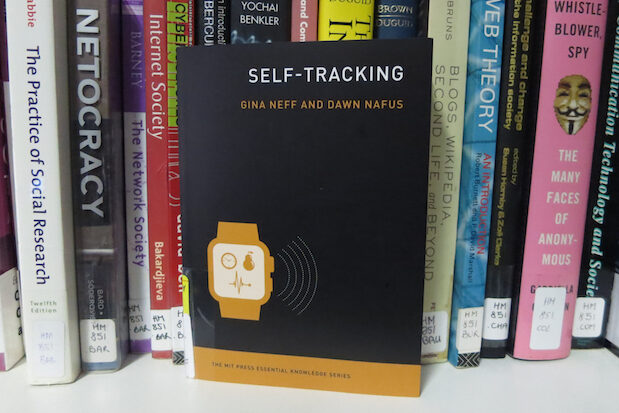
We are increasingly exposed to new practices of data collection. Image by ijclark (Flickr CC BY 2.0).
As digital technologies and platforms are increasingly incorporated into our lives, we are exposed to new practices of data creation and collection—and there is evidence that American citizens are deeply concerned about the consequences of these practices. But despite these concerns, the public has not abandoned technologies that produce data and collect personal information. In fact, the popularity of technologies and services that reveal insights about our health, fitness, medical conditions, and family histories in exchange for extensive monitoring and tracking paints a picture of a public that is voluntarily offering itself up to increasingly invasive forms of surveillance. This seeming inconsistency between intent and behaviour is routinely explained with reference to the “privacy paradox”. Advertisers, retailers, and others with a vested interest in avoiding the regulation of digital data collection have pointed to this so-called paradox as an argument against government intervention. By phrasing privacy as a choice between involvement in (or isolation from) various social and economic communities, they frame information disclosure as a strategic decision made by informed consumers. Indeed, discussions on digital privacy have been dominated by the idea of the “empowered consumer” or “privacy pragmatist”—an autonomous individual who makes informed decisions about the disclosure of their personal information. But there is increasing evidence that “control” is a problematic framework through which to operationalize privacy. In her Policy & Internet article “From Privacy Pragmatist to Privacy Resigned: Challenging Narratives of Rational Choice in Digital Privacy Debates,” Nora A. Draper examines how the figure of the “privacy pragmatist” developed by the prominent privacy researcher Alan Westin has been used to frame privacy within a typology of personal preference—a framework that persists in academic, regulatory, and commercial discourses in the United States. Those in the pragmatist group are wary about the safety and security of their personal information, but make supposedly rational decisions about the conditions under which they are comfortable with disclosure, logically calculating the costs and…









